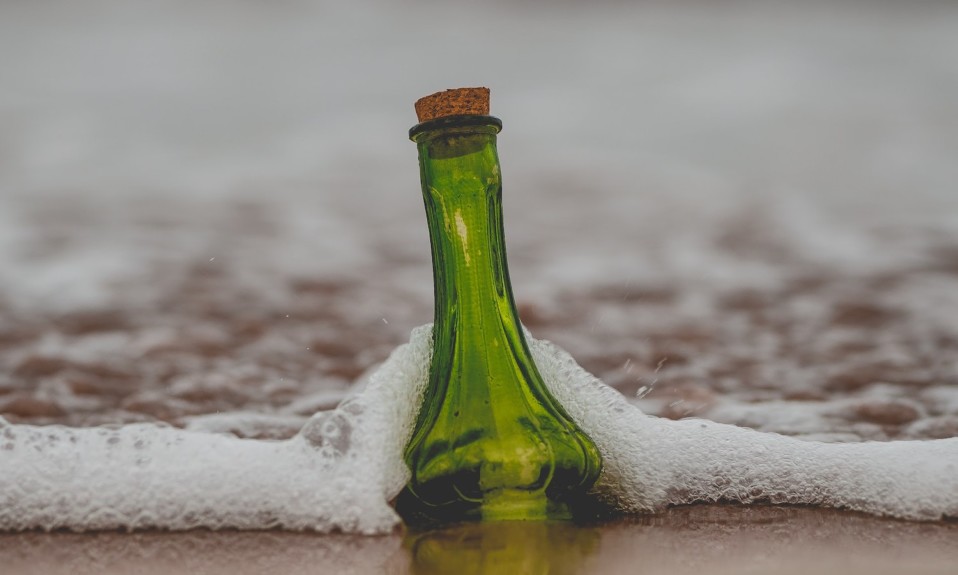In these challenging times, it’s more important than ever to restore hope and a sense of community
This post is reprinted with permission from one of TreatmentMagazine.com’s go-to blogs about addiction, treatment and recovery: Recovery Review.
By William Stauffer
One does not have to look very hard to see that there is a general malaise in America. We are mired in a time with a myriad of complex challenges in which solutions seem elusive. We are experiencing profoundly difficult economic conditions, war, supply chain disruptions, social isolation and a level of vitriol toward each other unrivaled at any point in American history since the Civil War. It is moments such as this that offer us the opportunity to rise to our collective challenges and build something anew. We must look beyond despair to restore hope to sustain our society. Drug use to numb pain and addiction have become more prevalent. Our times require narratives of healing to overcome collective despair.
Despair is pervasive in our era. Partially as a result, our life expectancy rates continue to fall, even as other nations began to rebound after the first year of the pandemic. Overall, U.S. life expectancy decreased from 78.85 years in 2019 to 76.98 in 2020, slipping even further to 76.44 in 2021—a net loss of 2.41 years, as noted in a recent study by the University of Colorado, the Urban Institute and Virginia Commonwealth University. There is a lot of despair, which seems a central facet in the shortening of our expected life spans, and the impact can be uneven. Black and Indigenous people are experiencing overdoses at a rate greater than the white community.
As this NPR article, describing the work of Princeton economists Anne Case and Angus Deaton in examining why U.S. life expectancies were falling, notes, “Americans are drinking themselves to death, or poisoning themselves with drugs, or shooting or hanging themselves” at unprecedented rates starting around the year 2000. The evidence suggests that these trends are getting worse. What we are doing is not working. What we have not done involves investing in community.
As addiction is a central factor in deaths of despair, solutions must center on recovery.
The conceptualization of these fatalities as deaths of despair was an important step. It allowed us to understand the antecedent factors leading to these tragic losses. Such a narrative is important to help us consider what we are facing. However, to move to solution, we need to develop narratives that place our communities on pathways of hope and healing. We cannot stay stuck in the problem. We have a systemic challenge, and we need to conceptualize how to reverse these deaths of despair on a society-wide level—restoring community by developing narratives of healing in our communities. We must develop a solution narrative to overcome a problem narrative.
The opposite of despair is hope, a commodity in short supply for too many Americans. We must restore hope on the collective level to save lives and heal communities. If we want to restore hope in large-scale ways, we must nurture such communities and help them grow. We need to focus resources on the communities impacted to the greatest degree, which means investing in Black and Indigenous communities as a priority. As addiction is a central factor in deaths of despair, solutions must center on recovery.
Recovery stories are most often seen in the context of personal narratives, and they are highly individualized—no two people have identical recovery pathways.
Recovery narratives are stories of post-traumatic growth (PTG). PTG is a form of positive change that people experience as a result of struggling with major life crises or a traumatic event. PTG can be considered an outcome as well as a process. It is about maintaining a sense of hope that not only can a person who has experienced trauma survive, but they can also experience positive life changes as a result. Addiction has facets of trauma embedded in it. Often, but not always, addiction rises out of traumatic life experiences, and even when its roots are more firmly from other causation, like genetics and heavy use, life in addiction invariably involves significant trauma either antecedent to or subsequent to substance use initiation. Addiction can be seen as a communicable condition, but so can recovery.
Recovery stories are most often seen in the context of personal narratives, and they are highly individualized—no two people have identical recovery pathways. Restoring hope at the point of deepest despair is a common theme of addiction recovery narratives. Thousands of people experience the restoration of hope every day across the United States. But these are not just individual narratives. They are also shared narratives. Hope is often restored in small groups of people who support each other’s process. They work to regain their lives and provide service to each other in support of their common goal: recovery. They establish islands of healing. We need these islands in all communities.
Often, communities develop stories of how they came together to heal and build anew.
Post-traumatic growth occurs on the level of community. All addiction mutual support process can be viewed in the context of communal post-traumatic growth and recovery. Communities recover together from a variety of traumas beyond addiction. Natural disasters, mass shootings and economic collapse are several that come to mind. Often, communities develop stories of how they came together to heal and build anew—narratives that help people conceptualize common cause and rise up together through the devastation and redefine themselves. They form new islands of mutual support.
An example of a shared narrative of healing occurred through the New Recovery Advocacy Movement (NRAM). NRAM occurred at a time many of us saw as a crisis time and came together to change it. Groups of dedicated people with few resources came together and changed a lot of what we do and think about addiction. They started focusing on the healing and not just the pathology. They shifted the narrative to recovery. They began to share their stories of healing and developed community-based strategies of healing. Investment by SAMHSA was fundamental to what happened. Several people at SAMHSA, including Dr H. Westley Clark and Cathy Nugent, understood that communities can heal themselves and with even modest resources could build things that are sustainable over the long term through the Recovery Community Support Program (RCSP). They had the insight that communities that are resourced to heal form a process for collective post-traumatic growth—islands of hope, connection and purpose, communities that can help heal other challenges beyond addiction and bring us together as a nation.
In looking for articles on how to systemically address deaths of despair, little has been written on solution narratives. Five years ago, Bill White, in his piece “The Role of Recovery Communities in Cultural Healing,” posed the question: “Is it possible that people in addiction recovery and diverse communities of recovery could serve as a force for cultural and cross-cultural healing?” It seems to me to be the question of our times and the narrative we build to do so is crucial.
What we may want to think about to change the direction in which we are heading:
- How do we conceptualize and articulate community-wide solutions to address deaths of despair?
- What can we do as a society to fuel efforts to strengthen resiliency in all of our communities?
- Where are our narratives of hope to bring people together to reverse these deaths in diverse communities across America?
- How can we form recovery narratives of hope that we can share with each other so that communities can start to heal themselves?
One of the reasons we may have difficulty developing a collective hope narrative is that we approach solutions primarily with a service focus, rather than a community-building focus. I suspect, having interviewed and worked directly with several of the initial RCSP grant holders, that community-building was a core feature of the success of these projects. They brought people together. They saw the community as the healing agent—not an isolated set of services, but hives of hope and connection emphasizing restoration of community. The grants were shifted from a support focus to a service focus in early stages of the grant project, and so we did not fully yield what this initial focus could have realized. Support focuses on drawing community together; service delivery is oriented in traditional treatment infrastructure, where units of care are delivered at the individual or group level, with all of their inherent limitations. The likely risk of founding a new idea in an old model is the replication of the old model that was unable to deliver critically needed new growth.
We need a collective recovery story in America right now. We can start with elevating the stories of islands of healing that are rising out of the sea of despair.
We have identified the problems; the critical next step is conceptualizing and articulating solutions. Humans are motivated to change when there are stories that they can identify with and strive toward. History is replete with examples of overcoming immense problems occurring when how we thought of those things shifted to seeing new opportunities and developing new narratives. We need a collective recovery story in America right now. We can start with elevating the stories of islands of healing that are rising out of the sea of despair. We can start by recognizing that recovery communities are vital to overcoming other challenges we have here in the United States. We can start by rethinking solutions that are oriented in community rather than as a traditionally delivered unit of care.
We can develop narratives of community healing across this great nation.
This Recovery Review post is by William Stauffer, who has been executive director of Pennsylvania Recovery Organization Alliance (PRO-A), the statewide recovery organization of Pennsylvania. He is in long-term recovery since age 21 and has been actively engaged in public policy in the recovery arena for most of those years. He is also an adjunct professor of Social Work at Misericordia University in Dallas, Pa. Find more of his writing, as well as a thought-provoking range of articles, insights and expert opinions on treatment and addiction, at RecoveryReview.blog.
Photo: Ahmed Hasan














